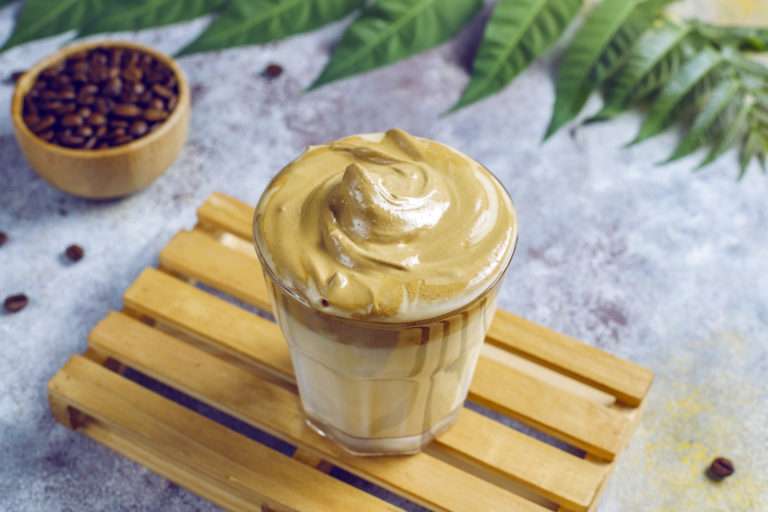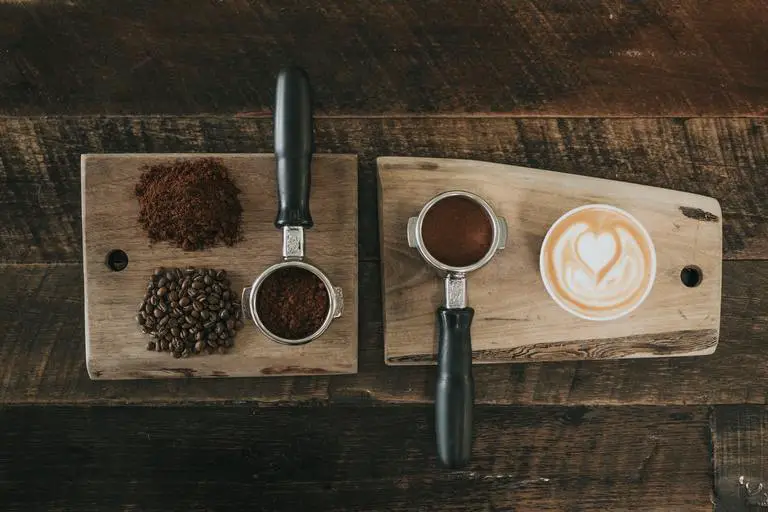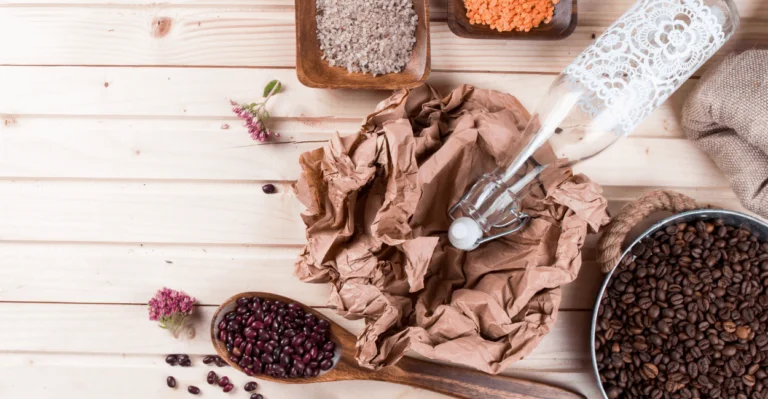What to do with Coffee Cherries? 15 Remarkable Uses to Explore
Do you love coffee? Then you might be curious about coffee cherries. They are the fruit that holds coffee beans. But what to do with coffee cherries? Many people don’t know. But they can be used in many ways.
In this article, we will talk about 15 interesting things to do with coffee cherries. So, let’s learn more about coffee cherries and all the amazing things we can do with them.
Processing Coffee Cherries: The Basics
Processing coffee cherries is the first step in producing high-quality coffee. The process involves removing the fruit from the coffee bean, drying the beans, and preparing them for roasting.
There are several methods of processing coffee cherries, including the natural method, the washed method, the pulped natural method (also known as the honey method), Giling Basah, and carbonic maceration.
The natural method involves laying out the coffee cherries in the sun to dry. This method is the simplest and most traditional method of processing coffee cherries.
However, it requires careful monitoring to prevent over-fermentation, which can cause the coffee to taste sour or spoiled. Examples of natural processed coffees include Ethiopian Yirgacheffe and Brazilian coffee.
The washed method involves removing the fruit from the coffee bean by soaking the cherries in water.
This method produces a cleaner and brighter flavor profile as it removes any impurities that may affect the taste of the coffee. Examples of washed processed coffees include Kenyan and Colombian coffee.
The pulped natural method is a hybrid of the natural and washed methods. It involves removing some of the fruit from the coffee bean before letting it dry naturally.
The remaining fruit acts as a natural sweetener, adding a unique flavor to the coffee. Examples of pulped natural processed coffees include Costa Rican and Guatemalan coffee.
In conclusion, the method of processing coffee cherries is crucial to the final taste and quality of the coffee. Each method produces a unique flavor profile that appeals to different tastes and preferences.
As a coffee lover, it is essential to understand the different methods and choose one that suits your taste buds.
Coffee Cherry Products
1. Cascara Tea
A. What is cascara tea?
Cascara tea is a unique beverage made from the dried skins of coffee cherries. Often overlooked during coffee production, these skins are rich in flavor and nutrients, making them perfect for a delicious and healthy tea.

B. How to brew cascara tea
Brewing cascara tea is simple and easy. Here’s a step-by-step guide:
- Measure 1 tablespoon of dried cascara per 8 ounces of water.
- Heat the water to around 200°F (93°C).
- Add the cascara to a teapot or French press.
- Pour the hot water over the cascara and let it steep for 4-5 minutes.
- Strain the tea into a cup and enjoy! You can adjust the steeping time and amount of cascara for a stronger or milder flavor.
C. Health benefits and taste profile
Cascara tea offers several health benefits due to its high antioxidant content. Antioxidants can help protect your body against free radicals and reduce inflammation. Additionally, some studies suggest that cascara tea may help with weight management and digestion.
As for its taste profile, cascara tea has a fruity, mildly sweet flavor with a hint of tartness. Its unique taste makes it a refreshing alternative to traditional teas and a perfect choice for those looking to explore new flavors.
2. Coffee Cherry Flour
A. Producing coffee cherry flour
Coffee cherry flour is produced by milling dried coffee cherries into a fine powder. The process begins with collecting the leftover pulp and skins from coffee production.
These are then dried and ground, resulting in a versatile and nutritious flour that can be used in various recipes.
B. Nutritional profile and benefits
Coffee cherry flour boasts an impressive nutritional profile, as it is rich in antioxidants, fiber, and protein. The antioxidants in the flour may help protect your body from free radicals and reduce inflammation.
Meanwhile, the high fiber content can aid digestion and promote a feeling of fullness, which can be beneficial for weight management. Additionally, the presence of protein makes coffee cherry flour a valuable ingredient for those looking to boost their protein intake.

C. Recipe ideas and uses
Coffee cherry flour can be used in a variety of recipes, adding a unique flavor and nutritional boost to your dishes. Here are some ideas for incorporating coffee cherry flour into your cooking:
- Baked goods: Substitute a portion of regular flour with coffee cherry flour in recipes for bread, muffins, pancakes, or cookies to add a hint of fruity flavor and extra nutrients.
- Smoothies: Blend a tablespoon of coffee cherry flour into your favorite smoothie recipe for an antioxidant-rich addition.
- Energy bars: Incorporate coffee cherry flour into homemade energy bars or granola bars for a protein-packed snack.
- Sauces and dressings: Add a small amount of coffee cherry flour to thicken sauces and dressings while enhancing their nutritional profile.
3. Coffee Cherry Pulp Extract
A. How it’s made
Coffee cherry pulp extract is made by extracting the juice from the pulp of coffee cherries. The process begins with separating the pulp from the coffee beans during coffee production.
The pulp is then soaked in water to extract the juice, which is further filtered and concentrated to create the final product – coffee cherry pulp extract.
B. Uses in food and beverage industry
Coffee cherry pulp extract has various applications in the food and beverage industry due to its unique flavor and potential health benefits. It can be used as a natural sweetener, flavor enhancer, or even as a coloring agent in different products, such as:
- Beverages: Add coffee cherry pulp extract to juices, smoothies, and cocktails for a fruity flavor and a nutritional boost.
- Baked goods: Incorporate coffee cherry pulp extract into recipes for cakes, muffins, and other baked goods to enhance their taste and nutrient content.
- Yogurt and ice cream: Mix coffee cherry pulp extract into yogurt or ice cream to create a delicious and healthy treat.
- Sauces and dressings: Use coffee cherry pulp extract as a base for sauces and dressings to add a unique flavor to your dishes.

C. Health benefits
Coffee cherry pulp extract is rich in antioxidants, which may offer several health benefits. Antioxidants help protect your body against free radicals and oxidative stress, which can contribute to chronic diseases and aging.
Additionally, some studies suggest that coffee cherry pulp extract may have anti-inflammatory properties, which could help reduce inflammation and support overall health.
4. Coffee Cherry Pectin
A. Extraction process
The extraction process for coffee cherry pectin involves separating pectin from the coffee cherry pulp. First, the pulp is washed and soaked in water to release the pectin.
The mixture is then heated, allowing the pectin to dissolve. Afterward, the solution is filtered to remove any impurities and concentrated, resulting in pure coffee cherry pectin.
B. Applications in food industry
Coffee cherry pectin has various applications in the food industry, mainly as a natural thickening agent and stabilizer. Its versatility makes it suitable for use in several products, including:
- Jams and jellies: Coffee cherry pectin can help achieve the desired consistency in jams and jellies without altering their flavor.
- Baked goods: Incorporate coffee cherry pectin in recipes for cakes, pastries, and other baked goods to improve their texture.
- Yogurts and desserts: Use coffee cherry pectin to thicken and stabilize yogurts, custards, and other dairy-based desserts.
- Sauces and dressings: Add coffee cherry pectin to sauces and dressings to achieve a smooth and consistent texture.
C. Potential health benefits
Coffee cherry pectin may offer health benefits due to its antioxidant content. Antioxidants help protect the body against free radicals and oxidative stress, which can contribute to chronic diseases and aging.
Additionally, pectin is a soluble fiber, which can help support digestion and maintain healthy cholesterol levels.
5. Coffee Cherry Leather
A. Production process
Coffee cherry leather is produced by dehydrating and compressing coffee cherry pulp. The pulp is first cleaned and spread out in thin layers to dry.
Once the moisture is removed, the dried pulp is then compressed into sheets, creating a durable and eco-friendly material known as coffee cherry leather.
B. Creative uses and benefits
Coffee cherry leather has a variety of creative uses and benefits, promoting sustainable fashion and manufacturing:
- Fashion accessories: Design and create unique handbags, wallets, belts, and other accessories using coffee cherry leather as an eco-friendly alternative to traditional leather.
- Footwear: Produce stylish and sustainable shoes using coffee cherry leather as the primary material.
- Upholstery and home goods: Utilize coffee cherry leather in furniture upholstery, decorative items, and other home goods to promote sustainability in interior design.
- Art and crafts: Use coffee cherry leather in various art and craft projects, showcasing its unique texture and appearance while supporting eco-friendly practices.
Coffee Cherry Innovations
6. Biofuel and Energy Production
A. Transforming coffee cherries into biofuel
Transforming coffee cherries into biofuel involves a process called anaerobic digestion. In this method, the cherries are placed in airtight containers and broken down by microorganisms in the absence of oxygen. This process produces biogas, a mixture of methane and carbon dioxide, which can be used as a renewable energy source for various applications, such as heating or electricity generation.
B. Environmental impact and benefits
Utilizing coffee cherries for biofuel production offers significant environmental benefits:
- Reducing waste: By converting coffee cherries into biofuel, we can reduce the amount of waste generated during coffee production, leading to more sustainable practices.
- Renewable energy source: Biogas produced from coffee cherries is a renewable energy source, reducing our reliance on fossil fuels and minimizing greenhouse gas emissions.
- Promoting circular economy: Using coffee cherries for biofuel production promotes a circular economy, where waste products are transformed into valuable resources, fostering sustainable development.

7. Coffee Cherry Fertilizer
A. Turning waste into nutrient-rich fertilizer
Coffee cherry waste can be transformed into nutrient-rich fertilizer through composting. The process involves piling coffee cherry pulp and skins, allowing them to decompose over time.
As the organic matter breaks down, it turns into a rich, humus-like material that can be used as a natural fertilizer for various plants, including coffee trees.
B. Impact on coffee farming and sustainability
Using coffee cherry waste as fertilizer can have a positive impact on coffee farming and sustainability:
- Reducing waste: Transforming coffee cherry waste into fertilizer helps reduce the amount of waste generated during coffee production, minimizing its environmental footprint.
- Nutrient recycling: Coffee cherry fertilizer returns essential nutrients to the soil, promoting healthy plant growth and improving crop yields.
- Cost-effective and eco-friendly: By using coffee cherry waste as fertilizer, farmers can save on the cost of synthetic fertilizers while supporting sustainable agriculture practices.
8. Coffee Cherry Livestock Feed
A. Nutritional benefits for animals
Coffee cherry waste can be repurposed as livestock feed due to its nutritional content. It is rich in fiber, protein, and essential nutrients that can support the health and growth of various animals, such as cows, pigs, and poultry.
Mixing coffee cherry waste with other feed ingredients can create a balanced and sustainable food source for livestock.
B. Reducing waste and improving farm efficiency
Using coffee cherry waste as livestock feed has several advantages:
- Waste reduction: Repurposing coffee cherry waste helps reduce waste generated during coffee production, contributing to a circular economy and sustainable agriculture practices.
- Cost-effective: Using coffee cherry waste as feed can lower the cost of livestock feed for farmers, improving their overall farm efficiency and profitability.
- Eco-friendly: By using a byproduct of coffee production as feed, farmers can reduce their reliance on traditional feed sources, minimizing the environmental impact of their operations.
9. Eco-friendly Packaging Material
A. Manufacturing process
Coffee cherry waste can be used to create eco-friendly packaging materials. The process involves drying and grinding the coffee cherry pulp and skins into a fine powder, which is then mixed with water and other natural binders. This mixture can be molded into various shapes and forms, creating sustainable and biodegradable packaging products.
B. Advantages of coffee cherry-based packaging
There are several advantages to using coffee cherry-based packaging:
- Environmentally friendly: Coffee cherry packaging is biodegradable and compostable, reducing plastic waste and its impact on the environment.
- Resource efficiency: Utilizing coffee cherry waste for packaging helps minimize waste generated during coffee production, promoting a circular economy.
- Unique branding opportunities: Coffee cherry-based packaging offers a distinctive and sustainable material, which can create a unique brand identity for eco-conscious businesses.
10. Coffee Cherry-based Cosmetics
A. Skincare Benefits of Coffee Cherry Waste
The byproducts of coffee cherries are abundant in antioxidants, which are known to be beneficial for skincare and cosmetic applications.
These antioxidants have the potential to shield the skin from harmful free radicals and oxidative stress, factors that are often linked to early signs of aging and various skin conditions.
This makes coffee cherry waste a compelling ingredient for the creation of skincare and cosmetic products.
B. Examples of cosmetic products
Various cosmetic products can benefit from the inclusion of coffee cherry waste, such as:
- Moisturizers: Incorporate coffee cherry extract into moisturizing creams or lotions to boost their antioxidant properties and promote healthy, glowing skin.
- Facial masks: Create revitalizing facial masks using coffee cherry flour or extract, which can help exfoliate, nourish, and rejuvenate the skin.
- Serums: Develop antioxidant-rich serums featuring coffee cherry extract to protect and repair the skin from environmental damage and signs of aging.
- Lip balms: Use coffee cherry oil or extract in lip balms to nourish and protect the delicate skin of the lips.
Coffee Cherry Art and Craft
11. Coffee Cherry Dye
A. Creating natural dye from coffee cherries
Natural dye can be created from coffee cherries by using their skins and pulp. To make the dye, the coffee cherry waste is first cleaned and then soaked in water.
The mixture is simmered until the desired color intensity is achieved. The liquid is then strained, and the remaining dye can be used for various applications in textiles and crafts.
B. Applications in textiles and crafts
Coffee cherry dye offers a range of possibilities for artists and crafters, such as:
- Fabric dyeing: Use coffee cherry dye to give fabrics a unique and eco-friendly color, perfect for creating one-of-a-kind clothing or home textiles.
- Yarn and thread dyeing: Dye natural fibers, such as wool or cotton, with coffee cherry dye for knitting, crocheting, or embroidery projects.
- Painting and drawing: Incorporate coffee cherry dye into your painting or drawing materials for a natural and sustainable color option.
- Paper and stationery crafts: Use coffee cherry dye to color handmade paper, greeting cards, or other stationery items.
12. Coffee Cherry Paper
A. Producing artisan paper from coffee cherry pulp
To produce artisan paper from coffee cherry pulp, the pulp is first cleaned, soaked in water, and then blended into a fine slurry.
The slurry is then poured onto a screen or mold and left to dry. As the water evaporates, the remaining fibers bond together, forming a sheet of handmade paper that showcases the unique texture and color of coffee cherries.
B. Creative uses and benefits
Coffee cherry paper offers a variety of creative uses and benefits:
- Handmade stationery: Create unique and eco-friendly greeting cards, invitations, or envelopes using coffee cherry paper.
- Art and craft projects: Use coffee cherry paper for collage, mixed media, or other artistic endeavors to add texture and visual interest.
- Bookbinding and journal making: Bind books or create custom journals with coffee cherry paper, offering a distinct and sustainable material for your projects.
- Packaging and gift wrap: Utilize coffee cherry paper for packaging or gift wrap to create a memorable and environmentally friendly presentation.
13. Coffee Cherry Jewelry
A. Designing unique jewelry pieces
Coffee cherry jewelry can be created by incorporating coffee cherry elements, such as dried cherries, seeds, or coffee cherry leather, into unique and stylish designs.
These distinctive pieces can include necklaces, earrings, bracelets, and rings, showcasing the beauty and versatility of coffee cherries.
B. Promoting sustainable fashion
By designing and wearing coffee cherry jewelry, you can promote sustainable fashion and support environmentally friendly practices. The use of coffee cherry waste in jewelry design helps reduce waste, minimize the environmental impact of fashion, and create a unique statement in support of eco-conscious living.
14. Coffee Cherry Art Installations
A. Innovative art concepts
Coffee cherry art installations can be developed by using coffee cherry waste, such as pulp, skins, or seeds, to create innovative and thought-provoking art pieces.
These installations can be displayed in galleries, public spaces, or art festivals, showcasing the creative potential of coffee cherries and their byproducts.
B. Raising awareness for sustainability
Through coffee cherry art installations, artists can raise awareness about sustainability, responsible coffee production, and the importance of a circular economy.
These installations can inspire conversation and encourage people to rethink their consumption habits and the impact of their choices on the environment.

15. Coffee Cherry-inspired Recipes
A. Infusing coffee cherry flavors in cuisine
Infuse coffee cherry flavors into your cuisine by using coffee cherry products such as cascara tea, coffee cherry flour, or coffee cherry pulp extract. These ingredients can add a unique taste and aroma to various dishes, elevating their flavor profiles and creating an exciting culinary experience.
B. Creative recipe ideas and inspiration
Explore creative recipe ideas and inspiration with coffee cherry ingredients:
- Cascara tea cocktails: Create refreshing cocktails by combining cascara tea with your favorite spirits, fruits, and herbs.
- Coffee cherry flour baked goods: Replace a portion of regular flour with coffee cherry flour in recipes for bread, muffins, or cookies, adding a subtle coffee cherry flavor and boosting the nutritional value.
- Coffee cherry glazes and sauces: Use coffee cherry pulp extract to create flavorful glazes or sauces for meat, poultry, or vegetables.
- Coffee cherry smoothies: Blend cascara tea or coffee cherry pulp extract with fruits, vegetables, and yogurt to create a delicious and nutritious smoothie.
Conclusion
To sum up, the potential of coffee cherries extends far beyond their conventional role in coffee production.
This article has shed light on 15 intriguing ways to answer the question, ‘What to do with coffee cherries?’ By transforming what was once discarded into valuable commodities, artistic creations, and innovative products, we’re fostering sustainability and creativity.
As we continue to unearth new uses for coffee cherries, we’re driving a positive shift in the coffee industry and championing eco-friendly initiatives.
These versatile byproducts not only enrich our lives with unique experiences but also contribute to a thriving circular economy.
FAQs
1. Are coffee cherries edible?
Yes, coffee cherries are edible. They have a sweet and slightly tangy flavor. While the cherries are not typically consumed in large quantities, they can be used to create various products like cascara tea, coffee cherry flour, and coffee cherry pulp extract.
2. Do coffee beans come from cherries?
Yes, coffee beans do come from cherries. The coffee plant produces cherries that contain two seeds, which we commonly refer to as coffee beans. The cherries start as small white flowers that bloom after rainy seasons.
The cherries are ripe when they turn red and are harvested by hand or machine. The outer layer of the cherry is removed to reveal the seeds, which are then dried, roasted, and ground to make coffee.
To give an example, the Arabica coffee variety, which is the most common in the world, has cherries that ripen over a period of 6 to 8 months and contain two flat beans.
In contrast, the Robusta coffee variety has cherries that take 10-11 months to mature and contain oval-shaped beans that are smaller than Arabica beans. Therefore, it’s safe to say that coffee beans are sourced from coffee cherries.
3. How can I buy coffee cherry products?
You can purchase coffee cherry products such as cascara tea, coffee cherry flour, or coffee cherry-based cosmetics from specialty food stores, health food shops, or online retailers. As the popularity of coffee cherry products grows, you may also find them in larger supermarkets or grocery stores.
4. What is the nutritional value of coffee cherries?
Coffee cherries are rich in antioxidants, fiber, and various nutrients like vitamins and minerals. They also contain small amounts of caffeine. The nutritional value of coffee cherries can vary depending on the specific product or processing method used, but they generally offer a range of health benefits.
5. what do coffee cherries taste like
Coffee cherries generally have a sweet and slightly tart taste. The flesh of the cherry, often referred to as the pulp, is where the sweetness comes from and it can have flavor notes similar to watermelon, rosewater, or hibiscus. However, the actual coffee beans inside the cherry are quite bitter and are not typically consumed directly.







